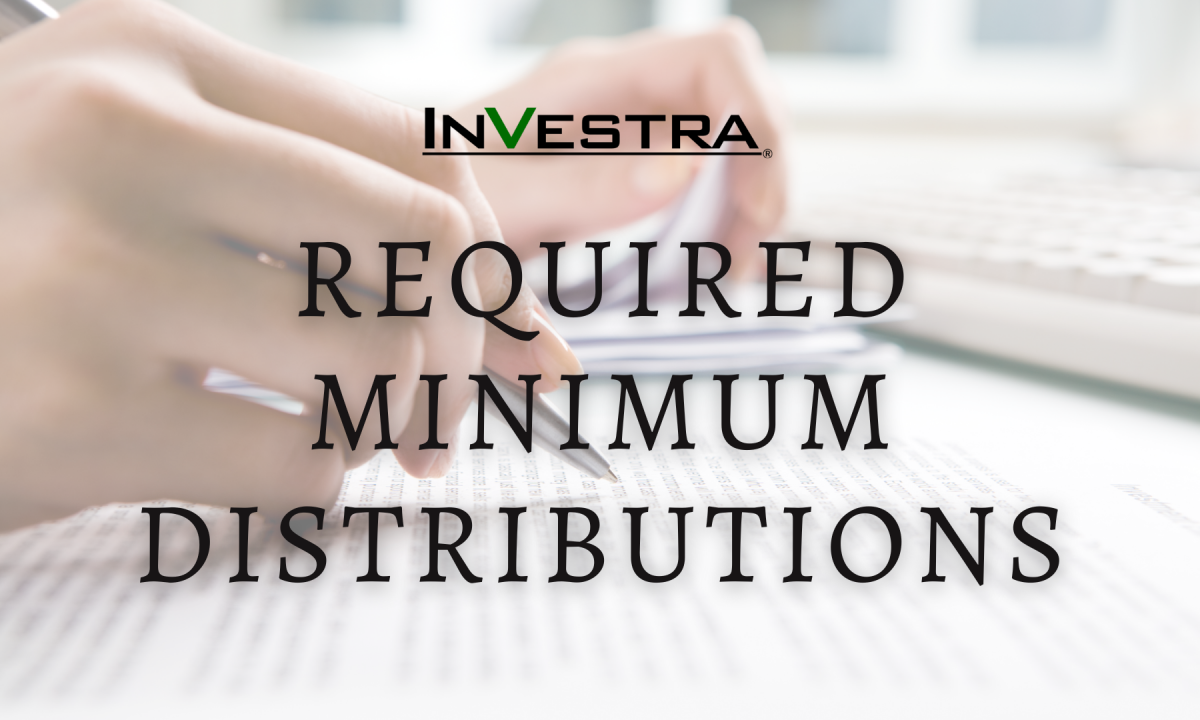After decades of hard work and saving money away into tax-advantaged retirement accounts, people entering their 70s now have to flip the script. Why? Because starting at age 72, Uncle Sam requires taxpayers to ‘draw down’ their retirement account savings through annual required minimum distributions.[1]
When must you start taking RMDs?
According to the SECURE Act, if you turned 70 ½ in 2019, then you should have taken your first RMD by April 1, 2020. If you turned 70 ½ in 2020 or later, you should take your first RMD by April 1 of the year after you turn 72. All subsequent ones must be taken by December 31 of each year.
This generally applies to the original owner of a traditional IRA, SIMPLE IRA, SEP IRA or a retirement plan, such as a 401(k) or 403(b). Roth IRAs do not have RMD.
The RMD is taxed as ordinary income, with a top tax rate of 37% for 2021.
An account owner who delays the first RMD will have to take two distributions in one year. For instance, a taxpayer who turns 72 in March 2021 has until April 1, 2022, to take his first RMD. But he’ll have to take his second RMD by December 31, 2022.
How do I calculate RMDs?
To calculate your RMD, divide your year-end account balance from the previous year by the IRS life-expectancy factor based on your birthday in the current year.
If you own multiple IRAs, you need to calculate the RMD for each account, but you can take the total RMD from just one IRA or any combination of IRAs. For example, if you have an IRA that’s smaller than your total RMD, you can empty out the small IRA and take the remainder of the RMD from a larger IRA.
A retiree who owns 401(k)s at age 72 is subject to RMDs on those accounts, too. But unlike IRAs, if you own multiple 401(k)s, you must calculate and take each 401(k)’s RMD separately.
You can take your annual RMD in a lump sum OR in pieces. Delaying the RMD until year-end, however, gives your money more time for tax-deferred growth potential. Either way, it’s crucial to withdraw the total amount by the deadline.
Are there penalties for missing RMD deadlines?
Unfortunately, yes. If you miss an RMD deadline, you could get hit with one of Uncle Sam’s harshest penalties—50% of the shortfall. For example, if you were supposed to take out $15,000 but only took $11,000, you’d owe a $2,000 penalty plus income tax on the shortfall. Luckily, the IRS can be lenient when it comes to these situations; you can request for an appeal by filing Form 5329, with a letter of explanation including the action you took to fix the mistake. One way to avoid forgetting: Ask your IRA custodian to automatically withdraw RMDs.
How would a rollover to a Roth account help avoid RMDs?
For those who own Roth 401(k)s, consider rolling the money into a Roth IRA, which has no RMDs for the original owner. Assuming you are 59½ or older and have owned at least one Roth IRA for at least five years, the money rolled to the Roth IRA can be tapped tax-free.
Another solution to avoid RMDs would be to convert traditional IRA money to a Roth IRA. This way you will owe tax on the conversion at your ordinary income tax rate, but lowering your traditional IRA balance reduces its future RMDs, and the money in the Roth IRA can stay put as long as you like.
Converting IRA money to a Roth is a great strategy to start early, but you can do conversions even after you turn 72, though you must take your RMD first. After that, you can convert all or part of the remaining balance to a Roth IRA. You can smooth out the conversion tax bill by converting smaller amounts over a number of years.
This can help you prevent paying more in taxes in the future. For instance, while traditional IRA distributions count when calculating taxation of Social Security benefits and Medicare premium surcharges for high-income taxpayers, Roth IRA distributions do not. And if you need extra income unexpectedly, tapping your Roth won’t increase your taxable income.
How do RMDs vary for individuals whose spouses are younger?
Up above we gave you the standard RMD calculation that most individuals will opt to use – but original owners with younger spouses can trim their RMDs! If you’re married to someone who is more than 10 years younger, divide your year-end account balance by the IRS life-expectancy factor at the intersection of your age and your spouse’s age in Table II of IRS Publication 590-B.
What is a ‘pro-rata’ payout’ as it pertains to an RMD?
If you can’t reduce your RMD, you may be able to reduce the tax bill on the RMD—that is, if you have made and kept records of nondeductible contributions to your traditional IRA. In that case, a portion of the RMD can be considered as coming from those nondeductible contributions—and will therefore be tax-free.[4]
Figure the ratio of your nondeductible contributions to your entire IRA balance. For example, if your IRA holds $200,000 with $20,000 of nondeductible contributions, 10% of a distribution from the IRA will be tax-free. Each time you take a distribution, you’ll need to recalculate the tax-free portion until all the nondeductible contributions have been accounted for.
Can I reinvest my RMD?
If you can’t reduce or avoid your RMD, look for ways to make the most of that required distribution. You can build the RMD into your cash flow as an income source. But if your expenses are covered with other sources, such as Social Security benefits and pension payouts, put those distributions to work for you. While you can’t reinvest the RMD in a tax-advantaged retirement account, you can stash it in a deposit account or reinvest it in a taxable brokerage account. If your liquid cash cushion is sufficient, consider tax-efficient investing options, such as municipal bonds. Index funds typically don’t throw off a lot of capital gains and can help keep your future tax bills in check.
Can I make an ‘in-kind’ transfer of my RMD?
Remember that the RMD doesn’t have to be in cash. You can ask your IRA custodian to transfer shares to a taxable brokerage account. So you could move $10,000 worth of shares over to a brokerage account to satisfy a $10,000 RMD. Be sure the value of the shares on the date of the transfer covers the RMD amount. The date of transfer value serves as the shares’ cost basis in the taxable account.
The in-kind transfer strategy is particularly useful when the market is down. You avoid locking in a loss on an investment that may be suffering a temporary price decline. But the strategy is also useful when the market is in the positive territory if you feel the investment will continue to grow in value in the future, or if it’s an investment that you just can’t bear to sell. In any case, if the investment falls in value while in the taxable account, you could harvest a tax loss.
Can I donate my RMD to charity?
Yes, if you’re so inclined, consider a qualified charitable distribution, or QCD. This move allows IRA owners aged 70½ or older to transfer up to $100,000 directly to charity each year. The QCD can count as some or all of the owner’s RMD, and the QCD amount won’t show up in adjusted gross income.
Can I use my RMD to pay my taxes?
Yes, you can even use your RMD to simplify tax payments. With the so-called “RMD solution,” you can ask your IRA custodian to withhold just enough money from your RMD to pay your entire tax bill on all your income sources for the year. That saves you the hassle of making quarterly estimated tax payments and can help you avoid underpayment penalties.
Because withholding is evenly paid throughout the year, this strategy works even if you wait to take your RMD in December. By waiting until later in the year to take the RMD, you’ll have a better estimate of your actual tax bill and can fine-tune how much to withhold to cover that bill.
Important Disclosures:
This material was created by InVestra Financial Services for the use of InVestra Financial Services. Securities are offered through LPL Financial, Member FINRA/SIPC. Investment advice is offered through InVestra Financial Services, a registered investment advisor and separate entity from LPL Financial. LPL Financial and InVestra Financial Services do not offer tax advice or services. All investing involves risk including loss of principal. No strategy assures success or protects against loss.
A Roth IRA offers tax deferral on any earnings in the account. Qualified withdrawals of earnings from the account are tax-free. Withdrawals of earnings prior to age 59 ½ or prior to the account being opened for 5 years, whichever is later, may result in a 10% IRS penalty tax. Limitations and restrictions may apply.
Traditional IRA account owners have considerations to make before performing a Roth IRA conversion. These primarily include income tax consequences on the converted amount in the year of conversion, withdrawal limitations from a Roth IRA, and income limitations for future contributions to a Roth IRA.
Municipal bonds are subject to availability and change in price. They are subject to market and interest rate risk if sold prior to maturity. Bond values will decline as interest rates rise. Interest income may be subject to the alternative minimum tax. Municipal bonds are federally tax-free but other state and local taxes may apply. If sold prior to maturity, capital gains tax could apply.
Investing in index funds involves risk, including possible loss of principal. The fund value will fluctuate with market conditions. The examples presented are hypothetical and are not representative of any specific investment. Your results may vary. All investing involves risk including loss of principal. No strategy assures success or protects against loss. Securities offered through LPL Financial, member FINRA/SIPC. Investment advice is offered through InVestra Financial Services, a registered investment advisor and separate entity from LPL Financial. LPL Financial and InVestra Financial Services do not offer tax or legal services.
[1] https://www.irs.gov/retirement-plans/retirement-plans-faqs-regarding-required-minimum-distributions
[2] https://www.irs.gov/pub/irs-pdf/f5329.pdf
[4] https://www.irs.gov/retirement-plans/rollovers-of-after-tax-contributions-in-retirement-plans








